#17th Century Spanish Cup-Hilt Rapier
Explore tagged Tumblr posts
Text
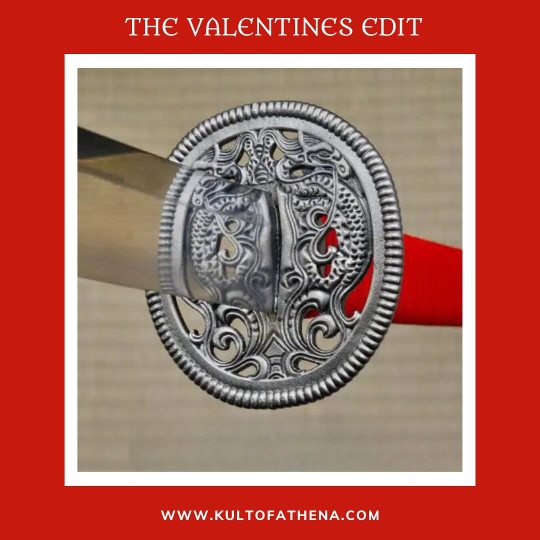

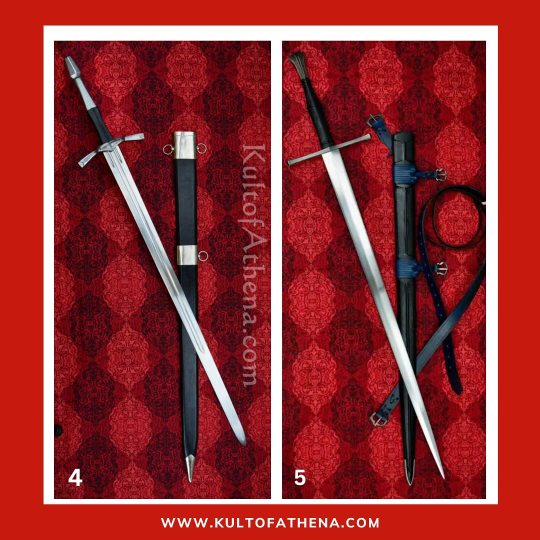
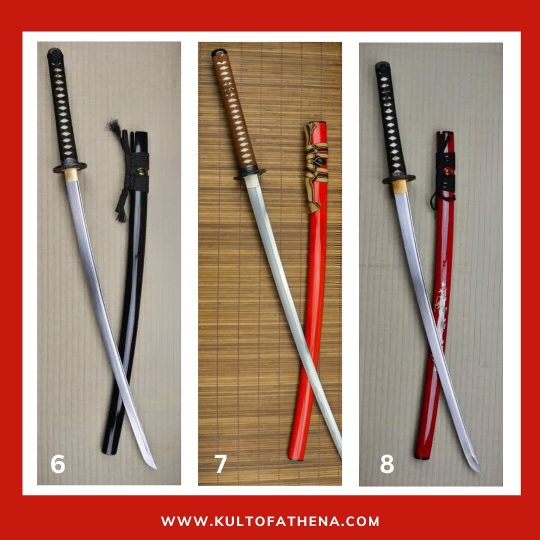

❤️ The Valentines Edit ❤️
What would you want someone to pick for you?
1. BKS Leaf Blade Greatsword 2. Hanwei Hand and a Half Sword 3. Cold Steel La Fontaine Sword of War 4. Deepeeka 15th Century Ring-Hilt Longsword 5. Vision -The Strasbourg Longsword 6. LK Chen – Tatsu Katana 7. Dragon King – Tenka Fubu Katana 8. Musha – Red Dragon Katana 9. Adam Bodorics – Landsknecht 16th Century All-Steel Dagger 10. LK Chen – Tizona – 17th Century Spanish Cup-Hilt Rapier
#Kult of Athena#KultOfAthena#Valentine's Day#Baltimore Knife & Sword#Hanwei#Cold Steel#Deepeeka#Vision#LK Chen#Dragon King#Musha#Adam Bodorics#17th Century Spanish Cup-Hilt Rapier#Landsknecht 16th Century All-Steel Dagger#Red Dragon Katana#Tenka Fubu Katana#Tatsu Katana#The Strasbourg Longsword#15th Century Ring-Hilt Longsword#La Fontaine Sword of War#Hand and a Half Sword#Leaf Blade Greatsword#Battle Ready#Stage Combat#Sport Combat#sword#swords#weapon#weapons
2 notes
·
View notes
Photo






Spanish / Italian Cup Hilted Smallsword or Transitional Rapier
In Northern Europe, following France’s lead, civilian sword fashion of the 17th and 18th centuries gradually shifted away from the rapier towards the smallsword. The shorter, more compact hilt and lighter smallsword was better suited to everyday wear and perfectly adequate as a weapon for self defence.
The countries of Southern Europe like Spain, Portugal and Southern Italy on the other hand persisted with the rapier and were disdainful of the new French fencing system. In these countries, the rapier evolved into it’s final and arguably best form, the cup-hilt. A style that’s identifiable by it’s distinctive bowl guard and long quillons.
However, while it was a great sword, the cup hilt rapier still suffered from the same drawbacks that saw them fall out of favour elsewhere. They remained large, cumbersome and heavy swords to be wearing all day, every day. Creating a daily burden for something that you hope to never have to use and gradually practicality won out in favour of perfection. Over time, swords became shorter and lighter adopting a form that more closely resembled the French smallsword.
Since these swords were used in the style of fencing practiced in Southern Europe, a style that teaches both the thrust and cut, or grips the sword differently, there are several distinctive features that sets them apart from the French inspired swords which were only used in the thrust.
In period, they would have simply been called a spada in Italy or espada in Spain, which literally translates to sword. Now, with our modern desire to look back and catalogue everything, the fall into a grey area. Too small to be considered rapiers they are generally too large to be called a smallswords. Sometimes people refer to them as transitional rapiers, as a group of swords that bridges the gap between the rapier and smallsword.
This sword from the late 18th century is an example of the type and displays many of the features that distinguish it from the regular smallsword:
Functional annelets or a cup guard that allow for a grip where the finger hooks over the quillons.
Lozenge or hexagonal cross section blades to retain a functional cutting edge at the tip.
Longer and heavier blades.
It’s physical properties are more in keeping with a military spadroon than a smallsword, and it is entirely possible that it originally was carried by and infantry officer. The cup guard is a single piece of brass and is held against the shoulder of the blade by the false ricasso. The grip is also solid brass decorated to look like wire and tape binding. It is possible that the whole guard was originally gilded, although none remains now.
The long blade is fullered in the forte (or strong) with decorative piercings that probably help take away some of the weight as well. It’s marked with a variation of the anchor and cross that is fairly commonly seen on blades of the time.
The key statistics are:
Overall Length: 1060 mm
Blade Length: 880 mm
Grip Length: 135 mm
Inside Grip Length: 95 mm
Weight: 640 grams
Point of Balance: 60 mm
74 notes
·
View notes
Text


A beautifully pierced Cup-hilt Rapier,
OaL: 48.4 in/123 cm
Spanish or Italian, 17th century, from Bolk Antiques.
396 notes
·
View notes
Photo


Spanish or Italian cup hilt rapier, 17th century
from Sofe Design Auctions
160 notes
·
View notes
Text
What a sword was called usually depends on the time and place. And probably weren't very consistent.
George Silver's Paradoxes of Defence mentions several types of sword. And it was published in 1599.
Long sword
Short sword
Rapier
Two handed sword
The long and short swords were any one handed cut and thrust sword, that isn't a rapier.
This is the sort of sword someone means if you're in the 17th century or earlier and say rapier.

This example has a cup hilt. It's by far the most popular form of rapier I've seen while doing HEMA. I think because it's cheaper to manufacture and protects your hand better, so you don't need gloves as thick.
I suspect two handed sword refers to anything from what HEMA people call a longsword today, to some sort of Zweihander or Bidenhander (or other names) if you're German and likely depending a lot on the time and place. Montante if you're Spanish. Or Spadone if you're Italian. And likely other names I don't know.
He also briefly mentions a "scimitar". This is the only historical source I know of that uses the word. Although I believe it's popularised later by the Victorians. I have no idea where the term came from, or what exactly he means. He could mean a curved sword from the Middle East, or he might mean an early sabre or dussack/Tessack.
Sword terminology is mostly weird and inconsistent.
Although during 18th century in Britain, people used rapier and smallsword interchangeably. They are not talking about the same rapier as George Silver.
They mean something like one of those two swords:


Ignore the difference in blade. Smallsword blades vary in size and form. But they're a lot shorter than a rapier.
However, the line between a rapier and a smallsword is blurry. There was a trend of shortening rapiers and completely sacrificing cutting ability, as well as simplifying the hilt to make it more comfortable to carry and less likely to knock into things as you walk around.
Almost all of this is English specific, I don't speak or know much about terminology in other languages. But a sword was rarely just a sword when there's multiple types around.
Interestingly, there's a trend of using the word for sword from other languages to describe foreign swords.
I've been told Tulwar/Talwar/Tulwaar is the word for sword in some Indian languages, but today we use it to refer to a sword like this.

Let me make one thing extremely fucking clear
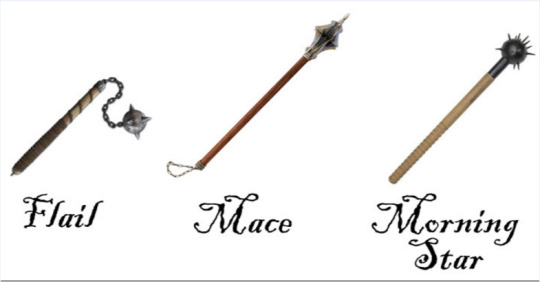
71K notes
·
View notes
Text
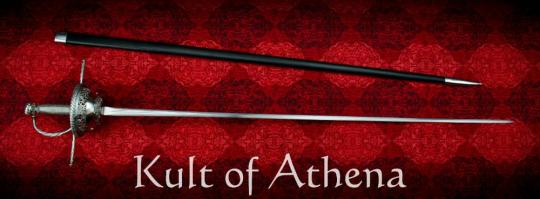


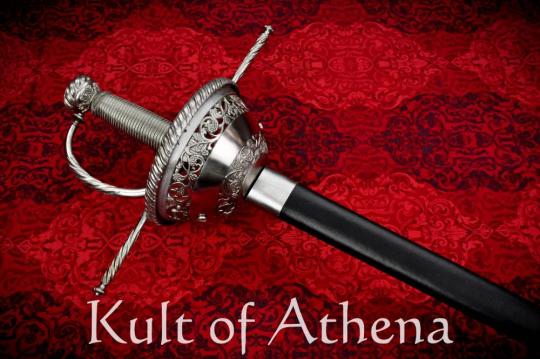
LK Chen – Tizona – 17th Century Spanish cup-hilt rapier
“Tizona” is a recreation of a beautiful 17th century Spanish Cup-Hilt rapier, inspired by specimens in the fine collection of Spanish Renaissance Rapier in New York Metropolitan Museum of Arts and other collections. Named after one of the famous sword carried by Spanish national hero El Cid Campeador, Tizona is an agile and light rapier optimized for thrusting. The sword is quite responsive in the hand and easy to point and thrust. This is another exacting recreation that LK Chen has taken on, with valuable input from experts in the details of its floral pattern cup hilt decoration and construction such as the braiding of the elaborate “Turkish head” wire knots in the hilt.
The well-tempered blade is crafted from GB 60Si2MnA high carbon steel and it is mounted into a complex and finely decorated hilt of stainless steel. The grip is bound in stainless steel wire which is surmounted by braided “Turkish head” knots. The sword is matched with a wooden scabbard which is overlaid in black leather and completed with a locket and chape of stainless steel.
#Kult of Athena#KultOfAthena#New Item Wednesday#LK Chen#Tizona#17th Century Spanish cup-hilt rapier#sword#swords#rapiers#weapon#weapons#blade#blades#European Swords#European Weapons#Renaissance Swords#Renaissance Weapons#17th century#Spanish Swords#Spanish Weapons#New York Metropolitan Museum of Arts#El Cid Campeador#GB 60Si2MnA High Carbon Manganese Spring Steel#Battle Ready#new items
3 notes
·
View notes
Photo


A beautifully decorated Cup-hilt Rapier with a pierced hilt in the Spanish style,
OaL: 46 in/116.8 cm
Blade Length: 39 in/99.1 cm
Italy, mid 17th century, housed at the Detroit Institute of Arts.
#weapons#sword#rapier#cup hilt#europe#european#italy#italian#spain#spanish#early modern#detroit institute of arts#art#history
227 notes
·
View notes
Photo

A beautiful matching Cup-hilt Rapier and Main Gauche Parrying Dagger, German blades, Spanish Hilts, 17th century, housed at the Kunsthistorisches Museum, Vienna.
#weapons#sword#dagger#rapier#parrying dagger#cup hilt#main gauche#europe#european#spain#spanish#germany#german#hre#holy roman empire#early modern#khm#vienna#art#history
281 notes
·
View notes
Photo

Spanish cup hilt rapier, late 17th century
from Thomas Delmar Ltd.
140 notes
·
View notes
Photo


Spanish cup hilt rapier, 17th century.
from Antikvity Praha
658 notes
·
View notes
Photo

A lovely Cup-hilt Rapier in the Spanish imperial measurements standardized for the Rapier by Luis Pacheco de Narváez. Spanish (obviously), ca. 17th century, housed at the Museo Lázaro Galdiano.
#weapons#sword#rapier#cup-hilt#imperial#Europe#European#Spanish#Spain#Luis Pacheco de Narváez#Pacheco#renaissance#Museo Lázaro Galdiano#art#history
81 notes
·
View notes
